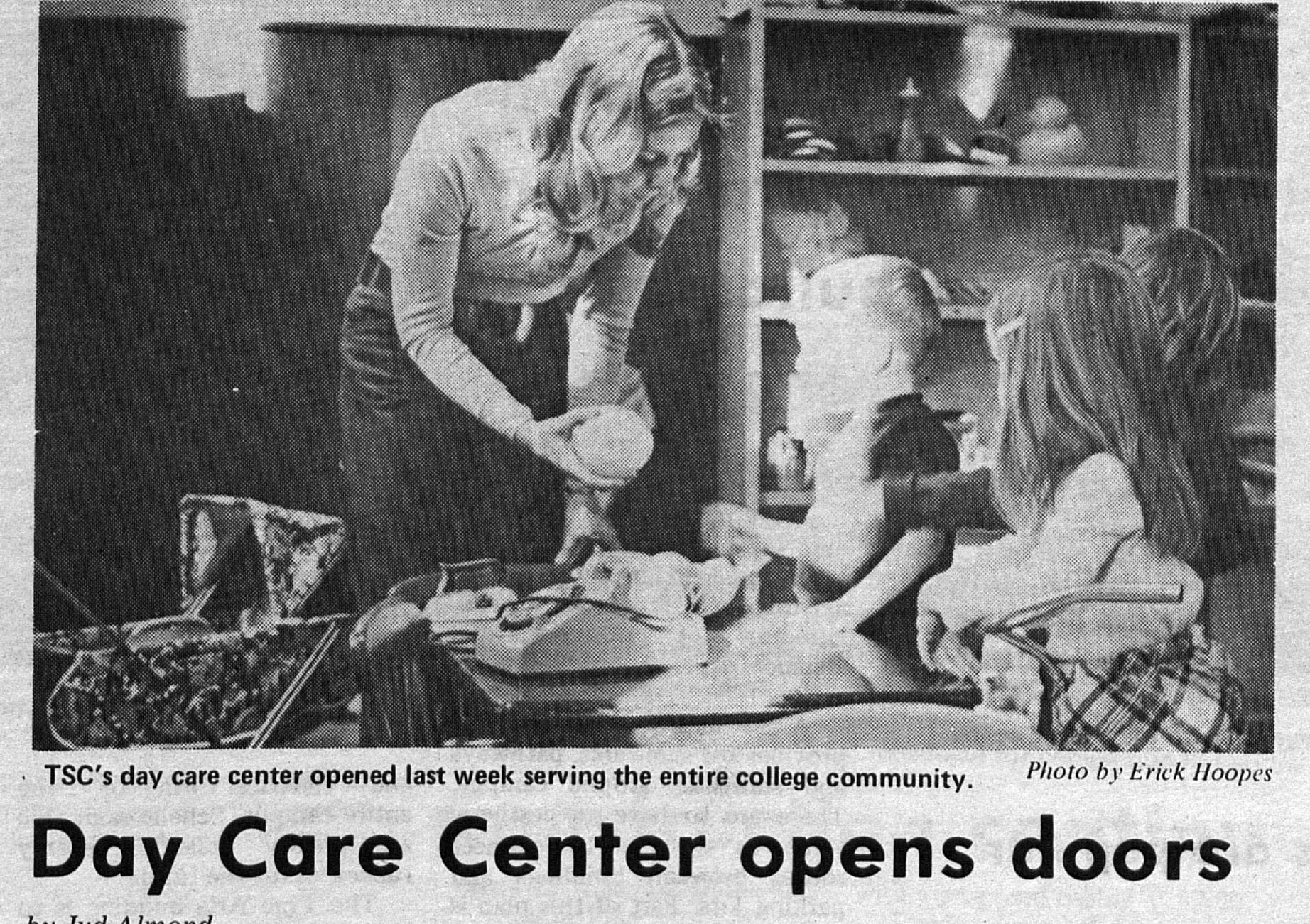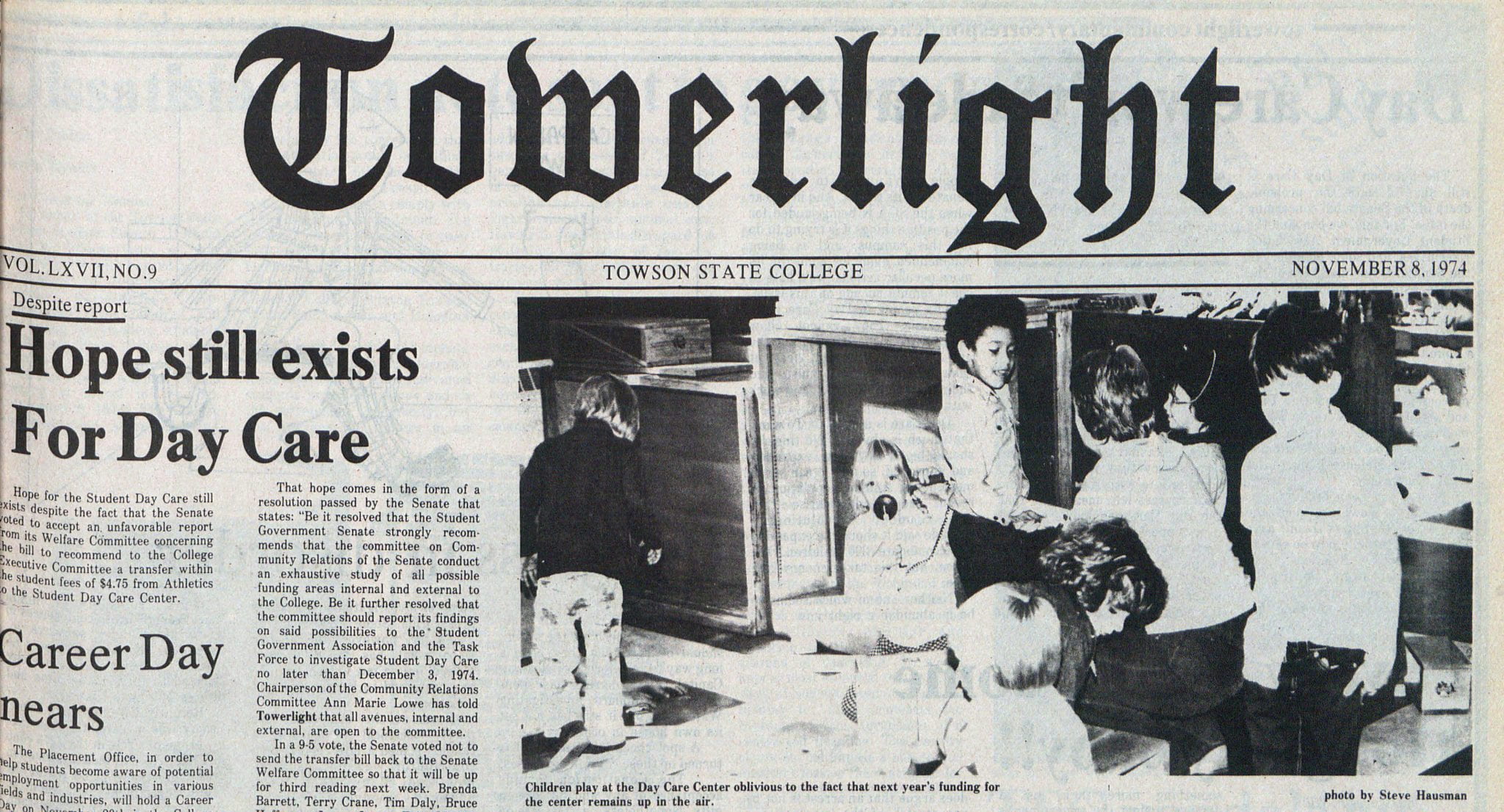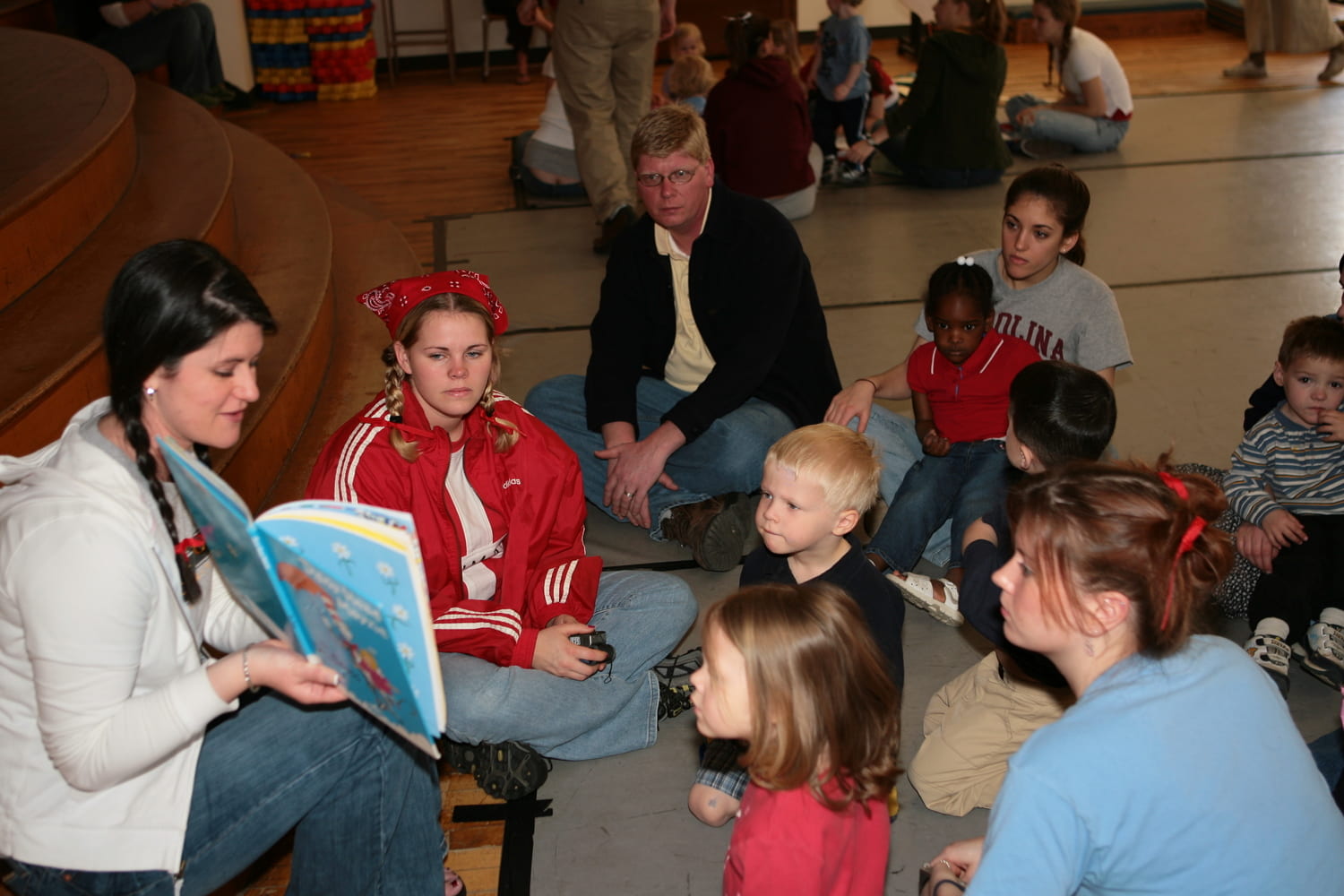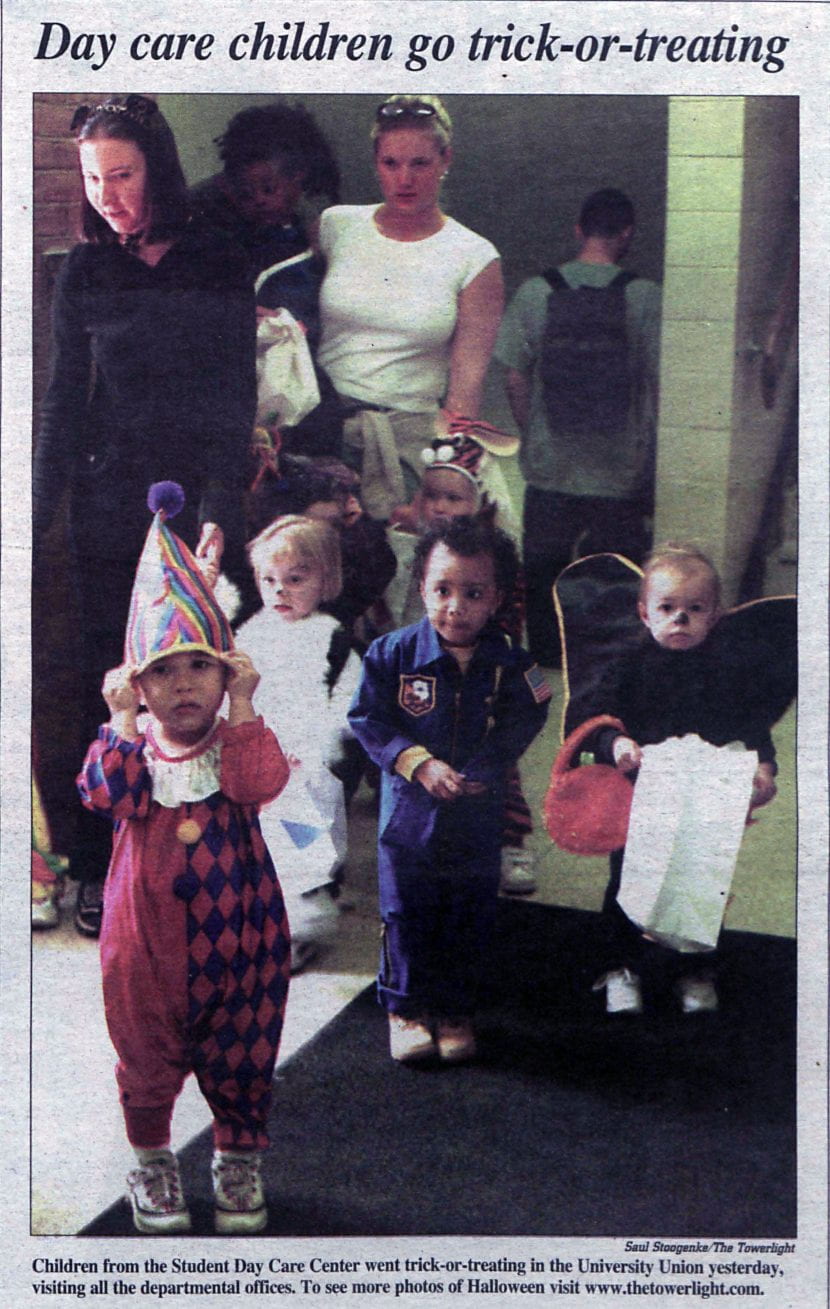“Education is simply the soul of a society as it passes from one generation to another.”
—G. K. Chesterton
The evolution of the State Teachers College at Towson to a liberal arts school in 1963 brought with it some unforeseen developments. Certainly the change in programming was expected, and the uptick and diversity in enrollment was the very catalyst for the transition anyway.
But one of the things that was not anticipated was a need for childcare.
When the school was a teachers training college, most of the students enrolled right after high school. Few were married. Few had children. That changed when the curriculum changed to a comprehensive college with degrees that ranged from education to liberal arts to sciences. This attracted a more diverse group of people, including those who returned to school after starting a family.
In November of 1971, the Towerlight printed an article titled “Child care center to serve TSC community”. A group of students, faculty, and staff members calling themselves “Concerned Parents for Child Care” (CPCC) circulated a petition calling on President Fisher as well as the SGA to find a way to establish and fund a low-cost child care center on campus for at least 30 children.
They were a highly energized group. Besides advocating for the center itself via petition as well as in-person information sessions, the group promised to support the center with volunteer hours.
The idea was that the center would care for children aged three to five while their parents attended classes. The cost would be somewhat low — $15 a week (about $70 in today’s money) — but the programming would be high quality with qualified teachers supporting a
At the same time, a child care center was opening in the Lida Lee Tall Learning Resource Center. That center was funded by the National Council of Jewish Women and would serve children in the nearby community as well as create a space for Early Childhood Education students to get some experience working with young children.
By December of 1971, the Student Day Care Center, as it would come to be known, was open three days a week from 9am – 12pm. It opened in a space created for it in the Lida Lee Tall building. Here, children between the ages of 3 and 5 would play, hear stories, adventure outside, enjoy snacks, and maybe, if everyone was lucky and the stars aligned correctly, take a nap.
By the spring semester in February of 1972, the Center was offering evening hours as well. From Monday through Thursday, it was open for students who needed childcare until as late as 10pm.

The following fall, it had its first director, Florence Leonard, and the center itself was fully certified, accredited, and staffed with trained professionals. There were weekly fees of about $10 to$20, depending on what parents could afford.
The next few years were a bit tumultuous. The Center was in constant danger of closing as budgets shrank and the SGA weighed the need for childcare on campus. But the center itself was considered ground-breaking. At the time, it was only one of two in the state devoted to caring for students’ children, and with a smaller budget than most day care centers in the area.
To try and mitigate some of the budget concerns, the Center began holding fundraisers. There were benefit concerts and basketball games between students and Towson State College faculty.
By 1974, however, the situation seemed dire. A number of things complicated the situation. The SGA, recognizing how hard it was to continue to be responsible for something like funding a daycare center when the SGA officials changed every year, decided to give responsibility for the administration of the center to the college’s Student Services division, so long as student funds were still used to support the center itself. However, this caused confusion over just who was responsible for the center. In the meantime, the college was under great financial stress as the nation floundered under a deep recession spurred in part by the oil embargo. For weeks, the fate of the Center hung in the balance while the campus wrestled over whether to fund it and how best to do so.

Supporters of the Center began protesting at SGA meetings and petitioning the administration. Various solutions were presented and rejected such as merging the Student Day Care Center with the Council Day Care Center. By the end of the fall semester in 1974, nothing had been resolved and the Center seemed in danger of closing.
However, when classes resumed in the spring of 1975, everything seemed resolved, and the Center was on firm footing for the first time since its creation. It continued to fall under the Student Services division. A new Director, Harriet Douthirt, was appointed in February of 1975. A graduate of Towson, she would go on to lead the Center for the next 38 years.
While there would continue to be debate about whether the majority of students should have fees to support a center that only a small number of students actually used, and while other funding cuts would continue to be a concern, the Student Day Care Center was a fixture on Towson’s campus by the 1980s.
The biggest change came in 1991. The Lida Lee Tall school on campus was closed due to lack of funding by the state. But the Day Care Center remained in the Lida Lee Tall building.

It would remain for the next 16 years until the demolition of Lida Lee Tall paved the way for a new College of Liberal Arts building. However, a new building was constructed for what is now known as the University Child Care Center. It sits across campus from its old home, near the stadiums and Auburn House.

For over 45 years, the childcare centers on Towson’s campus have allowed students the ability to enroll in classes and work toward making a better future for children and parents alike. We are grateful for those pioneering parents in 1971 who had a vision for what Towson could and should do for all its students and worked so hard to make that vision a reality.
